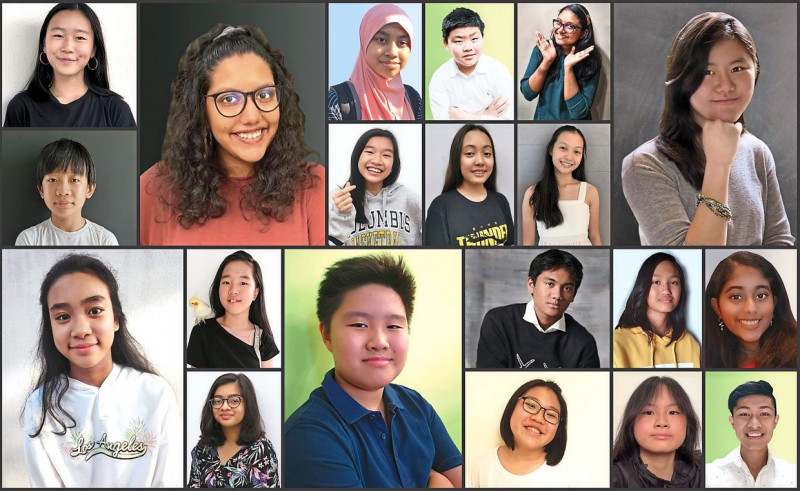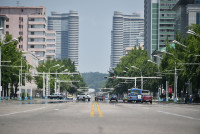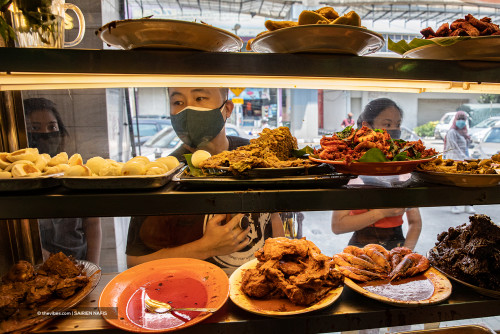‘LIVES Under Lockdown’ is a new collection of short stories by 20 young Malaysian writers. Published by MPH, these stories are the fruit of the Junior Writers Programme, taught by Brigitte Rozario, who also edited this interesting collection.
Within the scope and limits of a book review like this, it would be impossible to discuss all 20 of the stories featured, which in turn raises a conundrum particular to this book, or more specifically to the writers, their tender age, and the fact that they are just starting out on their writing paths.
To name just a few of these young writers would inevitably be to leave others unnamed. Given the nascent and burgeoning talents on display here, it would be unfair to single out any writer for attention, lest that be misconstrued as giving discouragement to any writer left unnamed. As such, the book will be discussed in more general terms.
Each story has its merits. While none are unreadable, inevitably some are better constructed or more tightly controlled than others. Though teenagers, several of these young writers show a maturity that belies their years.
Despite the common theme, which the title makes self-evident, all the stories here are quite different, both in style but also technically. Some have chosen a first-person point-of-view, others have adopted a more omniscient third-person point-of-view, while some even took the calculated risk of working with several points-of-view, generally considered unusual for the short story form, but by no means forbidden. There are no rules, only conventions which are there to be sidestepped or challenged.
There are family squabbles, unrequited quarantined love affairs, and quite a few deaths, mostly from Covid-19, but some from less natural causes.
In certain stories, these deaths are the central tragedy or climax the whole story centres around or builds up to, while in others, these deaths are treated more flippantly, given just a short line, as if the characters are as disposable as video game avatars whose loss is of no real consequence, rather than representations of real mortal human beings.
Some of the contributors have chosen to write outside their bubbles. Even just the choice of how they name their characters shows a willingness to write towards understanding other people, by placing themselves in other's shoes. A few writers have imagined themselves into situations very different from their own, focusing on those less fortunate, who might find themselves homeless on KL streets for example.
But unsurprisingly, and not unreasonably, many of the stories cleave closer to the theme of teenagers in lockdown.
One of the challenges young writers often face is that they have relatively little life experience and consequently less material to draw upon and channel into their fiction. Or perhaps more to the point, they may well have the experience, but don’t necessarily have the perspective that comes with years.
But writing in a pandemic has united both a highly unusual situation and the forced isolation often so propitious to creative endeavours.
To an extent, these young writers have been denied part of their youth, while on another hand they have lived through, and are living through, an experience that few have gone through before.
Long hours of isolation are more or less a prerequisite of the writing life. In this regard, the many flavours of MCO may have made good proving grounds.
Of course, being young, the writers presumably live within families, however extended or fragmented they may be. But they have had a taste of what it takes to start with a blank page and keep working their stories until they are ready, or at least prepared, to bravely send them out into the larger world. These writers are in their teens, a difficult time of life even in ordinary circumstances. That they have risen to the occasion by producing this book is no small achievement.
One of the interesting facets ‘Lives Under Lockdown’ offers is insight, not only into the challenges of teenhood but also the particular challenges and opportunities presented by being a teenager in this modern era. With the ongoing pace of technological change, no generation of teenagers has ever grown up within quite the same parameters.
The phrase digital-native (meaning those who have grown up assuming that the electronically mediated life is the norm), is almost redundant in their case. Indeed, they might be closer to second-generation digital natives. Almost every story features technology as a standard built-in feature.
While older readers might still be adjusting to carrying out so much of what now passes for social life through screens, for the writers here it’s clear that it is more a difference of degree than a substantial change.
The shift to online schooling, whether we see it as radical or overdue, is a theme that also crops up in many of these stories.
So much of our socialisation as young adults traditionally happens within the confines of educational establishments, but in some of these stories we see how not having to deal with IRL (in real life) interactions is for some characters (and perhaps their writers) not so much a loss as a relief.
The theme of online bullying, or friendships potentially ended at the touch of a button, feature in several of these stories. The distinction between the digital life and what we nominally still refer to as ‘real life’ becomes blurred, to a point that it almost seems pointless to make the distinction.
The subtext running through ‘Lives Under Lockdown’ is that these stories are not just a testimonial of a pandemic, but also a bearing witness to a monumental shift in the very definition of human life, how it is lived, and how quickly the whole experience of living life can become disembodied via technology. That digital life is now real life, is the somewhat dystopian shadow running through this book, in parallel to the more obvious, yet invisible, threat of a killer virus.
Conversely, ‘Lives Under Lockdown’ reassures us that a new generation of engaged Malaysian writers writing in English has just stepped over the horizon.
But buying and reading this book will not just support Malaysian writing. The royalties from sales of ‘Lives Under Lockdown’ go to SOLS health community centres, which work with children from poor communities, hopefully giving readers even more incentive to add this book to their to-read shelves. – The Vibes, March 13, 2021























